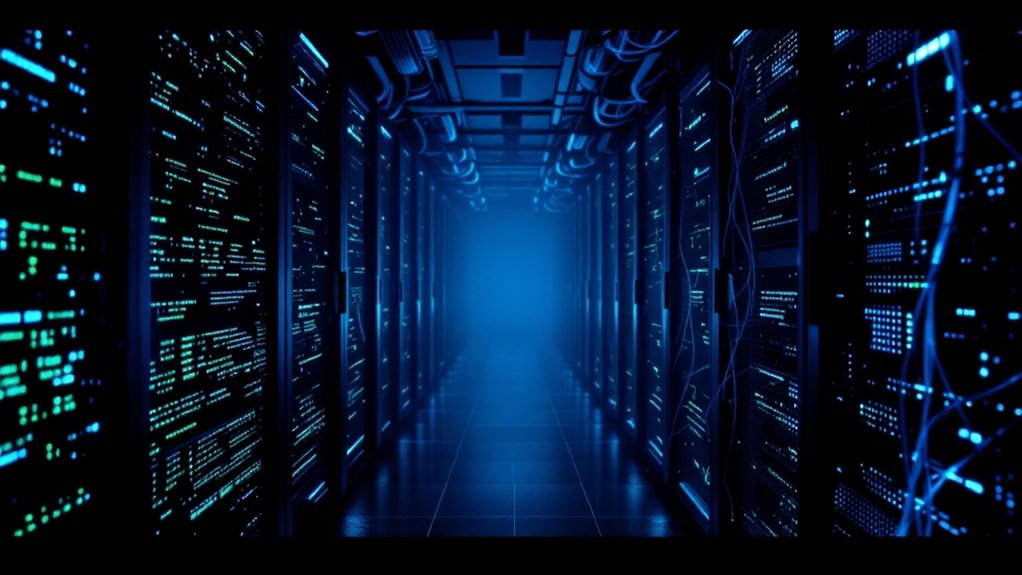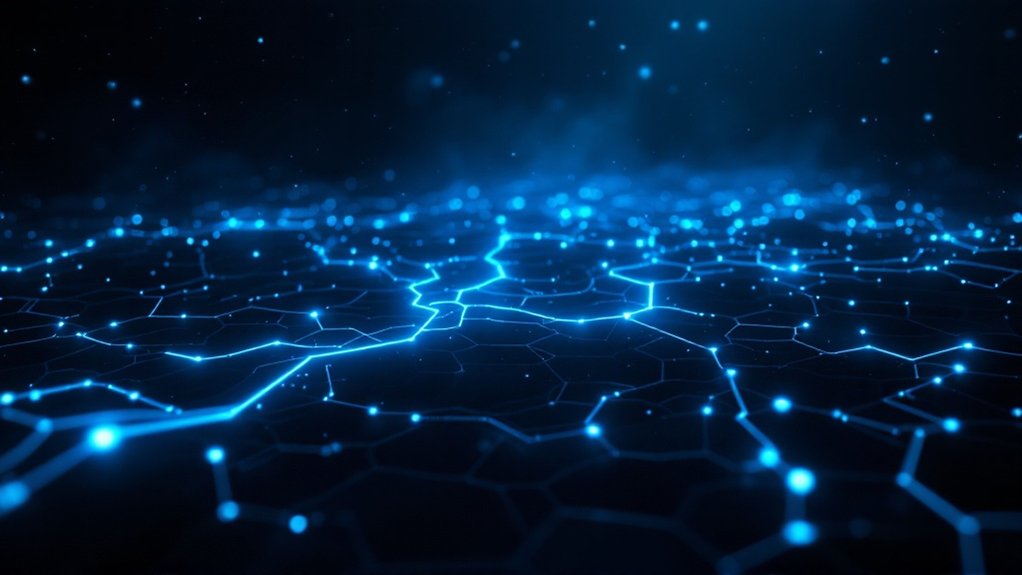The Dark Web comprises roughly 5% of the internet, requiring specialized browsers like Tor for access during operating beyond conventional search engines’ reach. This hidden network serves legitimate purposes, including protecting journalists and dissidents, yet harbors significant illegal activity, with 57% of content deemed unlawful. Organizations face substantial risks from stolen credentials, cyber attack tools, and corporate espionage traded there, making understanding this digital underworld crucial for modern security awareness.

The Dark Web represents one of the most controversial and misunderstood segments of the internet, comprising approximately 5% of total online content and requiring specialized browsers like Tor for access. This encrypted and anonymized network operates beyond the reach of conventional search engines, creating a digital space where users can communicate and transact with complete privacy, protected from surveillance and tracking. Users must understand that accessing this network requires special security measures to protect against potential cyber threats and malicious actors.
The Dark Web remains an enigmatic digital frontier, where anonymity reigns and conventional rules of online engagement cease to exist.
During the Dark Web serves legitimate purposes, including protecting political dissidents, whistleblowers, and journalists operating in oppressive regimes, it has gained notoriety as a haven for illicit activities. Cybercriminals exploit this hidden ecosystem to facilitate drug trafficking, weapons sales, and the distribution of stolen data, as money laundering operations thrive through cryptocurrency transactions that obscure the flow of funds. About 57% of content on the Dark Web is considered illegal, making it a significant concern for law enforcement agencies worldwide.
Organizations face significant risks from Dark Web activities, as it serves as a marketplace for corporate credentials, sensitive information, and cyber attack tools. The surface web represents only 10% of the total internet, making the hidden portions vast and largely unmonitored. Sophisticated threat actors utilize this platform to trade zero-day exploits, coordinate targeted attacks, and engage in corporate espionage, placing businesses’ digital assets at constant risk.
To combat these threats, cybersecurity experts highlight the critical importance of Dark Web monitoring and proactive defense strategies. Organizations must implement strong security measures, including multi-factor authentication, regular security audits, and thorough employee training programs. These protocols help protect against data breaches and minimize the risk of sensitive information appearing on Dark Web marketplaces.
Law enforcement agencies and cybersecurity firms actively monitor Dark Web activities to gather threat intelligence and track criminal operations. This surveillance provides valuable insights into emerging cyber threats and allows organizations to respond proactively to potential security breaches.
Through continuous monitoring and swift response protocols, businesses can better protect their digital assets and maintain operational integrity in an increasingly complex threat setting.
The Dark Web’s dual nature as both a tool for privacy protection and a platform for criminal enterprise highlights the importance of understanding and addressing its impact on modern digital security. As cyber threats continue to evolve, organizations must remain vigilant in monitoring and defending against Dark Web-based threats whilst respecting legitimate privacy concerns.
Frequently Asked Questions
How Can I Protect My Personal Information From Being Sold on the Dark Web?
Protecting personal information requires implementing multiple security layers, including strong, unique passwords with two-factor authentication for all accounts.
Regular credit monitoring, coupled with dark web monitoring services, helps detect compromised data early. Users should utilize VPNs on public networks, maintain updated security software, and minimize sharing sensitive information online.
Financial safeguards, such as credit freezes and virtual credit cards, provide additional protection against unauthorized access.
Is It Illegal to Simply Browse the Dark Web?
Simply browsing the dark web is legal in most countries, including the United States, when using tools like the Tor browser.
Nonetheless, engaging in illegal activities, such as purchasing contraband or accessing prohibited content, remains criminal regardless of the platform.
Law enforcement regularly monitors dark web activity, and users should exercise caution, maintain security protocols, and understand local regulations to avoid inadvertent exposure to illegal content.
What Types of Cybersecurity Tools Can Detect Dark Web Threats?
Several specialized cybersecurity tools effectively detect dark web threats.
Threat Intelligence Platforms, like CrowdStrike Falcon and SOCRadar, provide real-time monitoring of data breaches and emerging threats.
Network security solutions, including IDS and IPS systems, identify and block suspicious dark web traffic.
Dark web monitoring tools, such as Lunar by Webz.io and Ahmia.fi, utilize AI-powered analytics to track potential threats, whereas specialized investigation tools like OnionScan uncover vulnerabilities in hidden services.
How Quickly Do Stolen Credentials Typically Appear on the Dark Web?
Stolen credentials typically appear on dark web marketplaces within 1-3 weeks after initial theft, though timing varies based on several factors.
Cybercriminals require several days to process and package stolen data, with high-value credentials receiving priority treatment.
Initial access brokers often act as intermediaries, facilitating bulk sales that can range from hundreds to thousands of dollars.
Some credentials may continue circulating for up to 4 years post-breach.
Can Regular Websites Accidentally End up on the Dark Web?
Regular websites cannot accidentally appear on the dark web because of fundamental technical differences in infrastructure and protocols.
The dark web requires specialized configuration using .onion domains and the Tor network, making unintentional migration impossible.
Standard websites operate on traditional DNS systems and surface web protocols, whereas dark web sites demand deliberate setup with specific encryption methods and network routing configurations to function.









